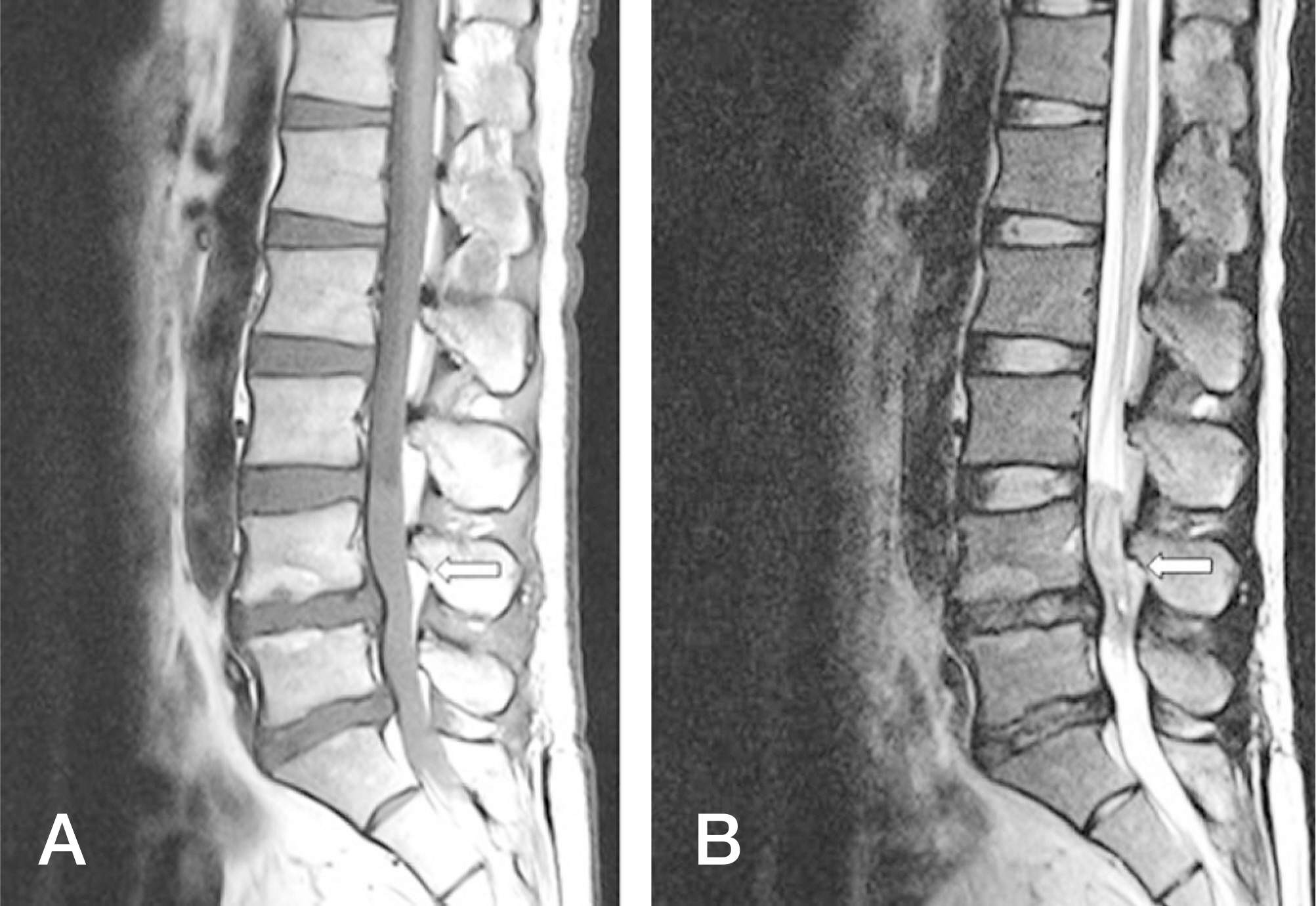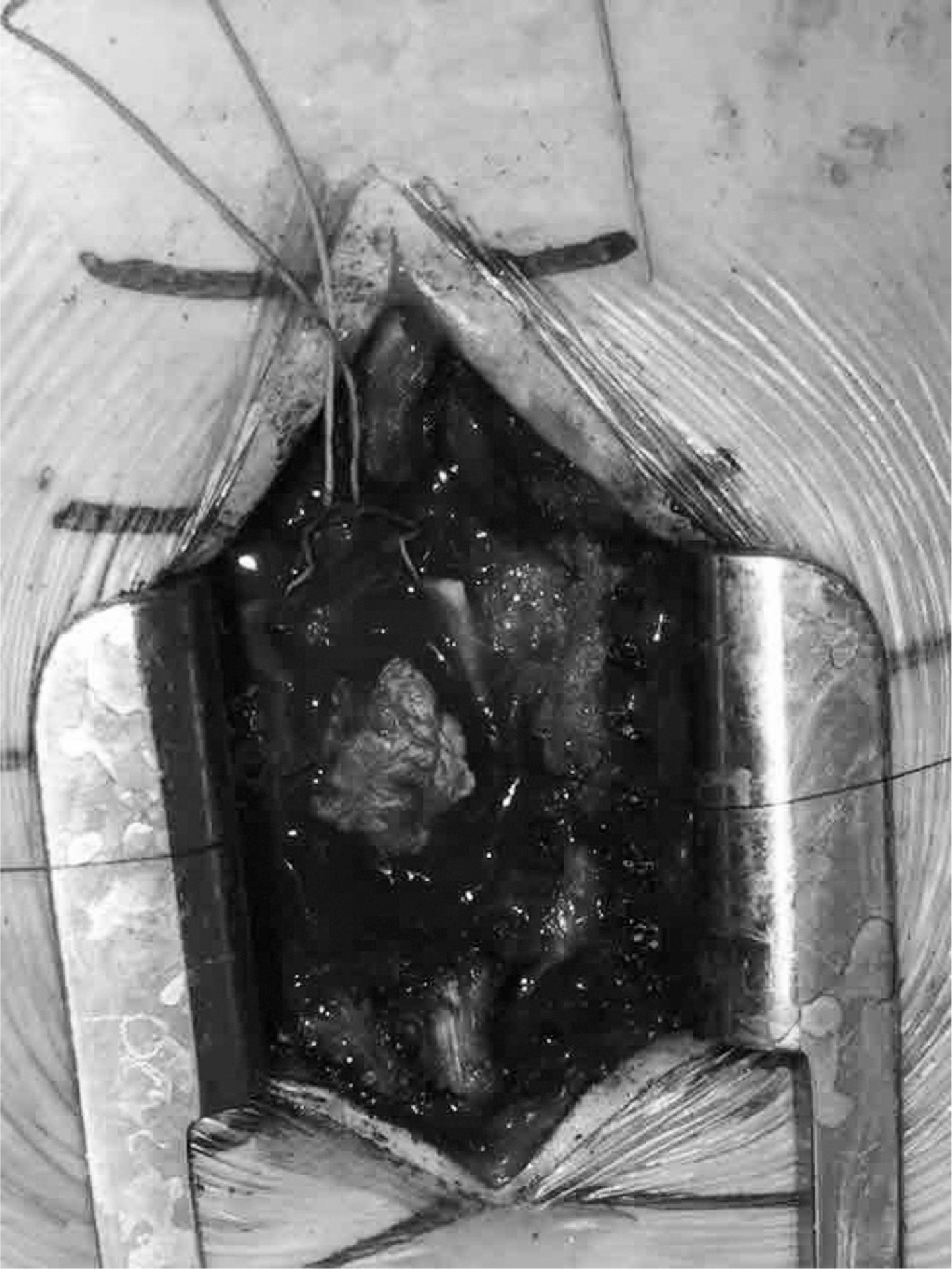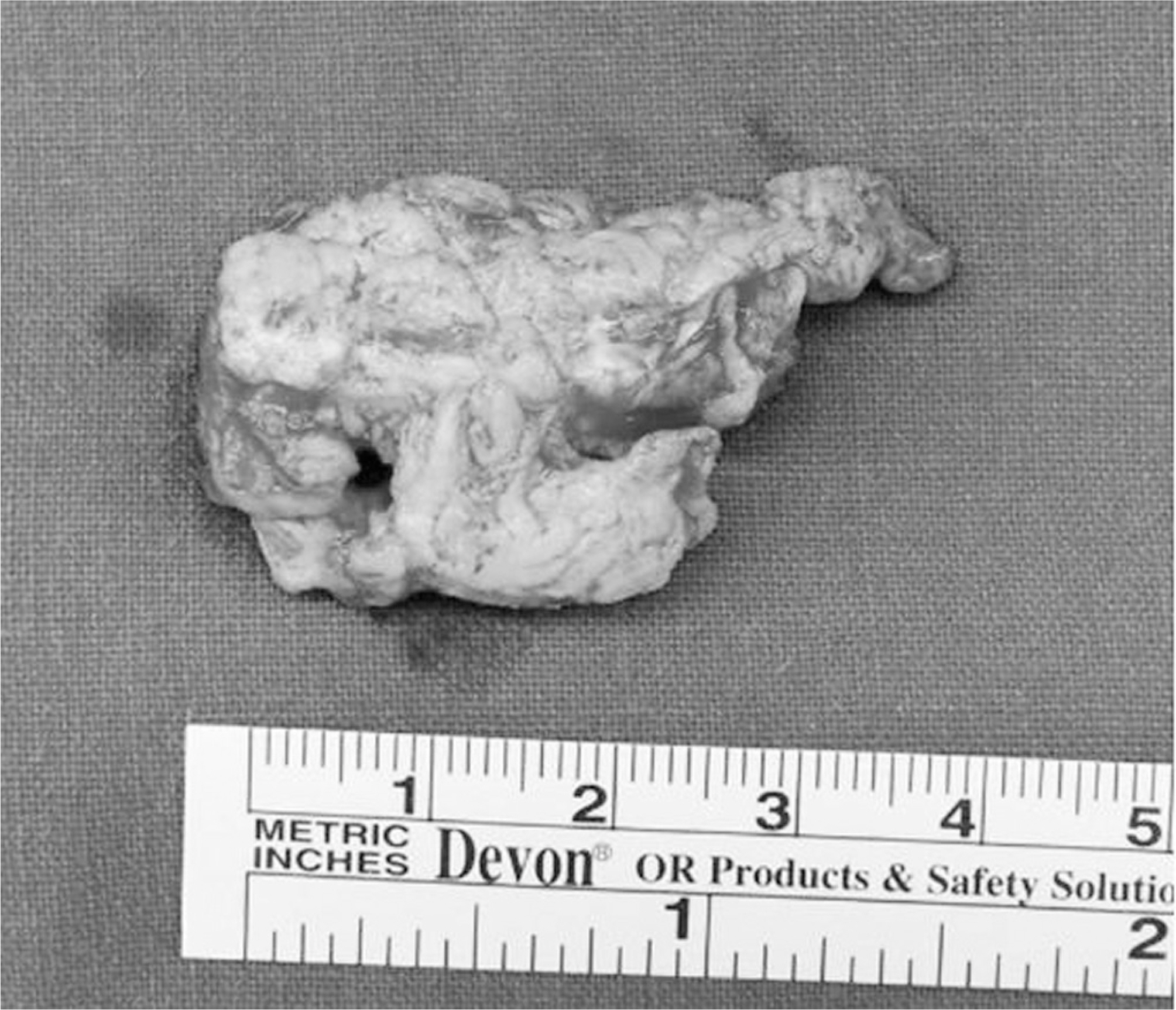J Korean Soc Spine Surg.
2016 Jun;23(2):127-130. 10.4184/jkss.2016.23.2.127.
Huge Intradural Lumbar Disc Herniation Mimicking an Intradural Spinal Tumor: A Case Report
- Affiliations
-
- 1Department of Orthopedic Surgery, Presbyterian Medical Center, Jeonju, Korea. docby@hanmail.net
- KMID: 2328007
- DOI: http://doi.org/10.4184/jkss.2016.23.2.127
Abstract
- STUDY DESIGN: A case report.
OBJECTIVES
To report a case of cauda equine syndrome due to a lumbar intradural disc herniation. SUMMARY OF LITERATURE REVIEW: IDH is rare but there is a higher incidence of neurologic deficit in IDH. Therefore, it should be treated immediately.
MATERIALS AND METHODS
A 34-year-old male patient was presented with cauda equina syndrome due to a lumbar intradural mass and underwent surgical excision.
RESULTS
Operative findings and the histologic study revealed an intradural disc herniation.
CONCLUSIONS
IDH is very rare lesion but should be considered in a differential diagnosis if preoperative MRI demonstrates an intradural lesion.
MeSH Terms
Figure
Reference
-
1. Epstein NE, Syrquin MS, Epstein JA, et al. Intradural disc herniations in the cervical, thoracic and lumbar spine: report of three cases and review of the literature. J Spinal Disord. 1990; 3:396–403.2. D'Andrea G, Trillo G, Roperto R, et al. Intradural lumbar disc herniations: the role of MRI in preoperative diagnosis and review of the literature. Neurosurg Rev. 2004; 27:75–80.3. Yildizhan A, Pasaoglu A, Okten T, et al. Intradural disc herniations: pathogenesis, clinical picture, diagnosis and treatment. Acta Neurochir. 1991; 110:160–5.
Article4. Ducati LG, Silva MV, Brandã o MM, et al. Intradural disc herniation: report of five cases with literature review. Eur Spine J. 2013; 22(Suppl):404–8.5. Kataoka O, Nishibayashi Y, Sho T. Intradural lumbar disc herniation: report of three cases with a review of the literature. Spine. 1989; 14:529–33.6. Kim KC, Choi JY, Kim JS, et al. Intradural lumbar disc herniation – A case report -. J Korean Soc Spine Surg. 1996; 3:274–9.7. Borm W, Bohnstedt T. Intradural cervical disc herniation: case report and review of the literature. J Neurosurg Spine. 2000; 92:221–4.8. Hida K, Iwasaki Y, Abe H, Shimazaki M, et al. Magnetic resonance imaging of intradural lumbar disc herniation. J Clin Neurosci. 1999; 6:345–7.
Article9. Aydin MV, Ozel S, Sen O, et al. Intradural disc mimicking a spinal tumor lesion. Spinal Cord. 2004; 42:52–4.
Article10. Agarwal N, Shah J, Hansberry DR, et al. Mammis A, Sharer LR, Goldstein IM. Presentation of cauda equina syndrome due to an intradural extramedullary abscess: a case report. Spine J. 2014; 14:E1–6.
- Full Text Links
- Actions
-
Cited
- CITED
-
- Close
- Share
- Similar articles
-
- Lumbar Intradural Disc Herniation Mimicking a Chondroma
- Intradural Disc Herniation at L5-S1 Mimicking an Intradural Extramedullary Spinal Tumor: A Case Report
- Redundant Nerve Roots of Cauda Equina Mimicking Intradural Disc Herniation: A Case Report
- Intradural Lumbar Disc Rupture
- Traumatic Intradural Lumbar Disc Herniation without Bone Injury





